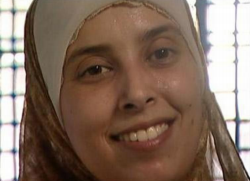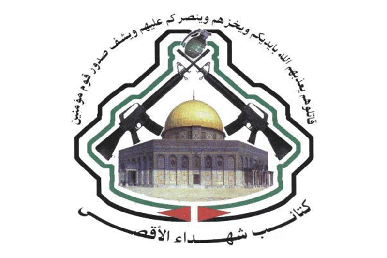
The Second Intifada, also known as the Al-Aqsa Intifada, was a major uprising by Palestinians against the Israeli occupation, characterized by a period of heightened violence in the Palestinian territories and Israel between 2000 and 2005. The general triggers for the unrest are speculated to have been centered on the failure of the 2000 Camp David Summit, which was expected to reach a final agreement on the Israeli–Palestinian peace process in July 2000. An uptick in violent incidents started in September 2000, after Israeli politician Ariel Sharon made a provocative visit to the Al-Aqsa compound, which is situated atop the Temple Mount in East Jerusalem; the visit itself was peaceful, but, as anticipated, sparked protests and riots that Israeli police put down with rubber bullets, live ammunition, and tear gas. Within the first few days of the uprising, the IDF had fired one million rounds of ammunition.

The roadmap for peace or road map for peace was a plan to resolve the Israeli–Palestinian conflict proposed by the Quartet on the Middle East: the United States, the European Union, Russia and the United Nations. The principles of the plan, originally drafted by U.S. Foreign Service Officer Donald Blome, were first outlined by U.S. President George W. Bush in a speech on 24 June 2002, in which he called for an independent Palestinian state living side by side with Israel in peace. A draft version from the Bush administration was published as early as 14 November 2002. The final text was released on 30 April 2003. The process reached a deadlock early in phase I and the plan was never implemented.

The Maxim restaurant bombing was a suicide bombing which occurred on October 4, 2003, in the beachfront "Maxim" restaurant in Haifa, Israel. Twenty-one civilians were killed and 60 were injured. Among the victims were two families and four children, including a two-month-old baby.

Palestinian political violence refers to actions carried out by Palestinians with the intent to achieve political objectives that can involve the use of force, some of which are considered acts of terror, and often carried out in the context of the Israeli–Palestinian conflict. Common objectives of political violence by Palestinian nationalists include self-determination in and sovereignty over Palestine, or the "liberation of Palestine" and recognition of a Palestinian state, either in place of both Israel and the Palestinian territories, or solely in the Palestinian territories. Some perpetrators of these acts support the dismantling of the State of Israel and its replacement with a Palestinian Arab state. More limited goals include the release of Palestinian prisoners or the Palestinian right of return. Other motivations include personal grievances, trauma or revenge.

On 1 June 2001, a Hamas-affiliated Islamist terrorist blew himself up outside the Dolphinarium discotheque on the beachfront in Tel Aviv, Israel, killing 21 Israelis, 16 of whom were teenagers. The majority of the victims were Israeli teenage girls whose families had recently immigrated from the former Soviet Union.
OneFamily Fund is an Israel based nonprofit organization that assists victims of Palestinian terrorist attacks, founded after the 2001 Sbarro restaurant suicide bombing. OneFamily describes itself as "the family of Israel's victims of militant attacks - those who have been bereaved, those who have been maimed, and those suffering from post-trauma as a result of terror attacks". OneFamily offers victims of terrorist attacks and their families rehabilitation programs and therapeutic assistance.
Note: This compilation includes only those attacks on Israelis that resulted in casualties and no Palestinian deaths are recorded. Numerous other attacks which failed to kill, maim, or wound are not included.

The 2006 Gaza–Israel conflict, known in Israel as Operation Summer Rains, was a series of battles between Palestinian militants and the Israel Defense Forces (IDF) during summer 2006, prompted by the capture of Israeli soldier Gilad Shalit by Palestinian militants on 25 June 2006. Large-scale conventional warfare occurred in the Gaza Strip, starting on 28 June 2006, which was the first major ground operation in the Gaza Strip since Israel's unilateral disengagement plan was implemented between August and September 2005.

Israeli casualties of war, in addition to those of Israel's nine major wars, include 9,745 soldiers and security forces personnel killed in "miscellaneous engagements and terrorist attacks", which includes security forces members killed during military operations, by fighting crime, natural disasters, diseases, traffic or labor accidents and disabled veterans whose disabilities contributed to their deaths. Between 1948 and 1997, 20,093 Israeli soldiers were killed in combat, 75,000 Israelis were wounded, and nearly 100,000 Israelis were considered disabled army veterans. On the other hand, in 2010 Yom Hazikaron, Israel honored the memory of 22,684 Israeli soldiers and pre-Israeli Palestinian Jews killed since 1860 in the line of duty for the independence, preservation and protection of the nation, and 3,971 civilian terror victims. The memorial roll, in addition to IDF members deceased, also include fallen members of the Shin Bet security service, the Mossad intelligence service, the Israel Police, the Border Police, the Israel Prisons Service, other Israeli security forces, the pre-state Jewish underground, and the Jewish Brigade and the Jewish Legion.
Events in the year 2002 in Israel.
Events in the year 2001 in Israel.
Events in the year 2001 in the Palestinian territories.

A suicide bombing took place on June 11, 2003, on Egged bus line 14a at Davidka Square in the center of Jerusalem. 17 people were killed in the attack and over 100 people were injured.

The Gilad Shalit prisoner exchange, also known as Wafa al-Ahrar, followed a 2011 agreement between Israel and Hamas to release Israeli soldier Gilad Shalit in exchange for 1,027 prisoners — almost all Palestinians and Arab-Israelis, although there were also a Ukrainian, a Jordanian and a Syrian. Two hundred and eighty of these had been sentenced to life in prison for planning and perpetrating various attacks against Israeli targets.

Abdullah Ghaleb Barghouti is a Palestinian leading commander in Hamas' armed wing, the Izz al-Din al-Qassam Brigades, in the West Bank. He was also one of the organization's chief bomb makers. Barghouti is currently serving 67 life-term sentences in Israeli prison.

Ahlam Aref Ahmad al-Tamimi is a Jordanian national known for assisting in carrying out the Sbarro restaurant suicide bombing in Jerusalem, in 2001. She was convicted by an Israeli military tribunal and received multiple life sentences, but was released in 2011 as part of the Gilad Shalit prisoner exchange. She hosts a television show about Palestinians in Israeli prisons.

The al-Aqsa Martyrs' Brigades is a coalition of Palestinian armed groups in the West Bank. The organization has been designated as a terrorist organization by Israel, the European Union, Canada, Japan, New Zealand, and the United States.
Husam Badran is the former leader of Hamas’s military wing in the northern West Bank. He was the orchestrator of several suicide bombings during the Second Intifada with the highest number of fatalities including the 2001 bombing which resulted in the Dolphinarium discotheque massacre in Tel Aviv which killed 21 people. Currently Badran serves as the international spokesperson for Hamas using Twitter, Facebook, and news media to encourage Hamas militants to commit acts of political violence against Israelis and the Israeli government. He lives in Doha, Qatar.
















